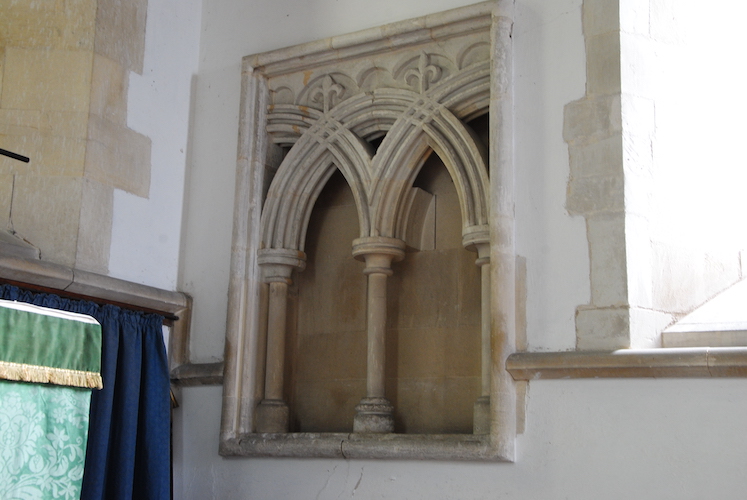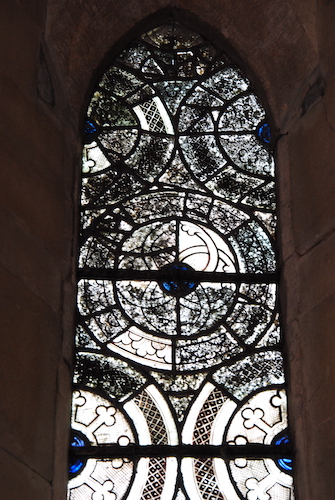Originally posted 2nd February 2023
Before the expulsion of Jews from England in 1290, Norwich had a small but significant Jewish population. One especially notable individual was Meir ben Elijah of Norwich, who was an unusual and gifted poet, flourishing in Norwich in approximately 1260.
Meir’s surviving poems - a long elegiac poem and fifteen shorter ones - can be found in a Vatican manuscript and include two in a form known as the friendship poem or shirei yedidut, which at the time was usually seen written by Spanish Jews and was used to thank patrons and codify patronage networks. In one of the poems, “When I Recall My Companion”, Meir expressed a wish to form a formal covenant with the anonymous patron but lamented the fact that he couldn’t find suitable sheep and fattened calves with which to perform the ritual. This is a Biblical reference; such sacrifices weren’t used by Medieval Jews. Instead, Meir said, he would butcher his name: he used the four letters of his name as the basis of sixteen stanzas, each beginning and ending with the letters of his name in order.
This kind of acrostic was popular in medieval poetry and Jewish poets often used them to encode important information, including relationships. Meir also used acrostics in poems written in the margins of other work, where they record his name, his identity as the son of a Rabbi, and the fact that he lived in Norwich, or Norgitz. That, as well as his use of friendship poetry to praise his patrons, indicates that Meir saw himself as very much part of a community rooted in England and specifically in Norwich, which had extensive trading and cultural links with Europe..
Meir’s poetry also shows influence from German and Northern French styles and the hybrid of Spanish and northern European poetic styles may have been the beginning of a distinct English style of Hebrew poetry, sadly cut short by the expulsion. Some historians believe that Meir used his poems specifically to fight against medieval English society’s denial of his English identity, hence his effort to specify that he came from Norwich.
Shelfmark for Meir’s poems: Vatican Library MS Hebrew 402
Originally posted 10th February 2023
During the early medieval period, rules on royal succession were fluid. Anglo-Saxon kings were chosen from among a pool of potential heirs known as athelings, including brothers, nephews, and sons (legitimate and illegitimate) of the previous king. A king might have a particular favourite atheling and might strengthen him with land and an advantageous marriage, but all the status meant was that the young man in question (and only men were eligible) would be considered a legitimate king if he managed to secure enough power to claim the title.
Naturally, other groups and power structures could also sponsor favoured athelings in the hope that such support was an investment in the future. Boys could be sent to relatives - often other kings - who would raise them and teach them the art of war. When the boy was old enough he would fight in his foster-father’s war band and, if a later claim for his own throne was successful, would recognise him as overlord. There were also other forms of support: as a boy, the future King Oswald was baptised and raised on Iona along with his younger brother and sister and even after he was king he maintained close links with the community and gave land for the foundation of a monastery at Lindesfarne, led by a bishop sent from Iona.
The rules of succession to the English crown were still not entirely solidified even after the Norman conquest: Henry I claimed the throne despite the potentially-superior claims of his elder brother Robert, and when he died England was split between rival claimants to the throne: his daughter Empress Matilda, his preferred choice, and King Stephen, his favourite nephew. Even though Henry had required all his barons - including Stephen - to swear that they would support a claim by Matilda and even though she was his only legitimate surviving child, Stephen had a valid claim as a man from the king’s family: an atheling. When he made good on that claim and was crowned while Matilda was still in the south of France with morning sickness, he was following an old tradition.
Originally posted 23rd February 2023
St Michael’s Longstanton is a rare thatched church, one of only two in Cambridgeshire (the other is All Saints’ Rampton, just up the road). It appears to have been built in the late 1100s or early 1200s, since it was dedicated to St Michael in 1217. It may be on the site of an earlier church, since there are some stone fragments in the north wall.
Externally, it’s considered a good example of a medieval church, though a lot of its current appearance isn’t original. For example, the porch dates from the 1400s and the church at some point have had a tower; parts of the west wall are slightly thicker in a manner that would support a tower, but there is no other visible evidence. Internally, the layout is now mostly open, but at least at one point there would have been a rood screen across the chancel and probably also small chapels at the east ends of both aisles. It was common practice to have smaller chapels in churches, which could be used to celebrate multiple simultaneous masses if enough clergy were available. There is still a niche visible in the side walls of the aisles which may have been a cabinet for keeping equipment or reserving bread and wine from each altar.

St Michael’s is also notable for the piscina in the chancel: an unusually intricate example for such a small church. It has the same design as the one in Jesus College and matching piscinae were also carved in St Andrew’s Histon as well as churches in Foxton and Arrington; it’s possible they were all carved by the same mason: an especially likely possibility for Histon and Longstanton since they had the same noble patron. As well as this, St Michael’s still has some of its original medieval glass in a window in the north wall of the chancel, giving a glimpse of the decoration even this small church may once have had.
